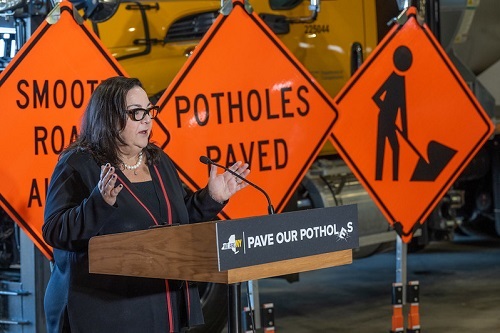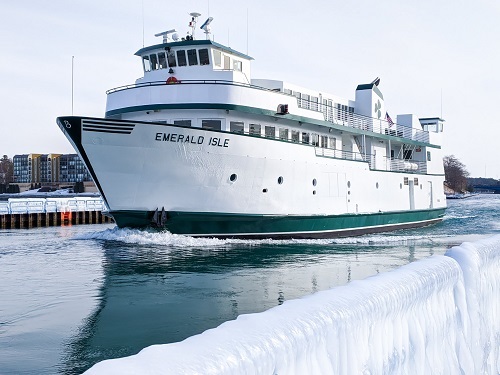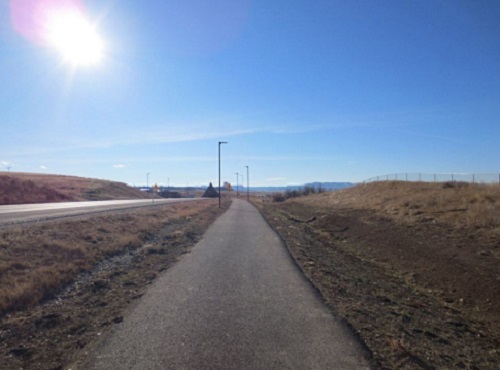FEDERAL ACTION
EPA proposal would change soot pollution standards for first time in 10 years: What we know – USA Today
Republicans erase ‘environmental justice’ from documents – E&E News
Interview with Pete Buttigieg on Spending $800 Million to Eliminate Traffic Deaths – Fast Company
The EV transition isn’t just about cars – the broader goal should be access to clean mobility for everyone – The Conversation (commentary)
President Biden Announces First of its Kind Infrastructure Investment for Nine Nationally Significant Mega Projects – USDOT (media release)
COVID-19
Bent, but Not Broken: How global supply chains demonstrate post-pandemic resilience. – Thinking Transportation (podcast)
INFRASTRUCTURE RESILIENCE AND SUSTAINABILITY
New York State’s Resilient Transportation System – AASHTO’s ETAP Podcast
Denver Bets on Rental Cars to Boost EV Adoption – CityLab
New York City will require Uber and Lyft to go 100 percent electric by 2030 – The Verge
Caltrans seeks rural, tribal volunteers for ‘road charge’ pilot – The Union
Virginia Port Authority’s Inland Port Switches to 100% Green Power – Maritime Executive
AIR QUALITY
Pathways to net-zero emissions from aviation – Nature Sustainability
Court upholds Minnesota ‘Clean Car Rule’ tied to California – AP
ENVIRONMENTAL JUSTICE
Mobility Justice in Rural California: Examining Transportation Barriers and Adaptations in Carless Households – University of California, Davis
E-Bikes Raise New Debates Around Infrastructure and Equity – Government Technology
CT lawmakers and advocates seek stronger statewide environmental justice law – WSHU Radio
NATURAL RESOURCES
We need native seeds in order to respond to climate change, but there aren’t enough – NPR
How Las Vegas declared war on thirsty grass and set an example for the desert Southwest – Los Angeles Times
GPS tracking, simulations show optimal locations to help desert bighorn sheep cross freeways – Oregon State University
EPA outlines path for cleanup at UP’s former wood-tie treatment site in Texas – Progressive Railroading
Study finds small isolated wetlands are pollution-catching powerhouses – University of Waterloo
CULTURAL RESOURCES
City of Kansas City, Missouri DOT launch effort to stop downtown graffiti – KMBC-TV
MD tourism leaders seek to link Chesapeake Bay destinations with passenger ferry – WMDT-TV
HEALTH AND HUMAN ENVIRONMENT/ACTIVE TRANSPORTATION
Paying More to Drive Less – Slate
Proposed SC-to-NC rail trail moving ahead, though some residents push back – Post and Courier
New autonomous car company Cruise adapts to bicycle riders, Austin policy – Daily Texan
Chicago’s Plan To Make Crosswalks Accessible For Blind Pedestrians Moving At A Crawl – WTTW-TV
TRB RESOURCES/ANNOUNCEMENTS
An Assessment of Native Seed Needs and the Capacity for Their Supply: Final Report – National Academies of Sciences, Engineering, and Medicine
Long-Term Vegetation Management Strategies for Roadsides and Roadside Appurtenances – National Academies of Sciences, Engineering, and Medicine
Transport Agency Functional Resilience – Preparing for Severe Disruptions – TRB (Webinar)
Career Series #2 – Sustainable Mobility: New and Expanding Opportunities – TRB (Webinar)
FEDERAL REGISTER NOTICES
Renewal Package From the State of Alaska to the Surface Transportation Project Delivery Program and Proposed Memorandum of Understanding (MOU) Assigning Environmental Responsibilities to the State – FHWA (Notice; request for comments)
Improving Road Safety for All Users on Federal-Aid Projects – FHWA (Notice; request for information)
Approval of Teterboro Airport (TEB) Noise Compatibility Program; Correction – FAA (Notice)
Noise Compatibility Program for San Diego International Airport, San Diego County, California – FAA (Notice of approval of noise compatibility program)
Comprehensive River Management Plan (CRMP) for Middle Fork Snoqualmie and Pratt Wild and Scenic Rivers on Mt. Baker-Snoqualmie National Forest – Forest Service (Notice of availability)
Notice of Availability of the Record of Decision and Approved Resource Management Plan for the San Juan Islands National Monument, Washington – Bureau of Land Management (Notice)
Reorganization of Title 30—Renewable Energy and Alternate Uses of Existing Facilities on the Outer Continental Shelf – Bureau of Safety and Environmental Enforcement and Bureau of Ocean Energy Management (Final rule)
Renewable Energy Modernization Rule – Bureau of Ocean Energy Management (Correction)
Urban Agriculture and Innovative Production Advisory Committee Meeting – Natural Resources
Conservation Service (Notice of public and virtual meeting)
National Offshore Safety Advisory Committee; March 2023 Meeting – Coast Guard (Notice)
Port Access Route Study: Approaches to Maine, New Hampshire, and Massachusetts – Coast Guard (Correction)
Air Plan Actions; Nevada; Clark County – Department of Environment and Sustainability; Stationary Source Permits – EPA (Proposed rule)
Proposed Consent Decree, Resource Conservation and Recovery Act Citizen Suit – EPA (Notice; request for public comment)
Clean Air Act Operating Permit Program; California; San Diego County Air Pollution Control District; Correction – EPA (Direct final rule; correction)





